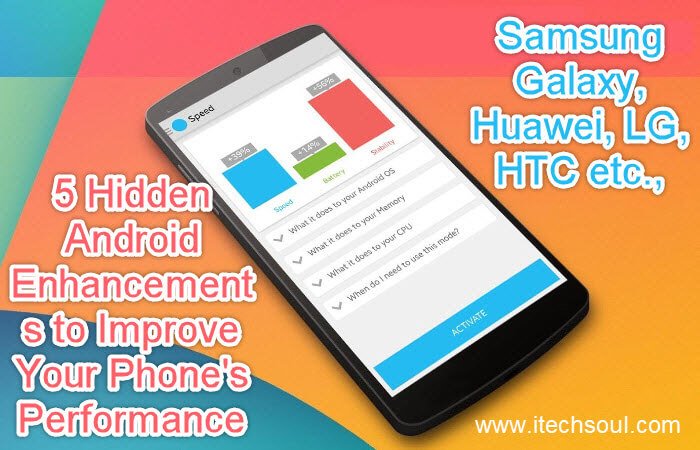When you open the Android settings menu, on every smartphone with this operating system, including Samsung Galaxy, Huawei, LG, HTC etc., there is a world of things, much wider than that of an iPhone, which remains a large part hidden within the phone settings and applications. In this article you can discover some of the most significant improvements present in almost all Android, phones, easy to activate to make everything easier.
These are often hidden functions, which are very useful to activate. The following guide is based on Android 7, but the various improvements should still be activated on Android 6 and Android 8 or later.
1- Quickly open the camera:
On any Android smartphone, you can take a picture as you would a compact camera, pressing a quick key, without unlocking the phone and looking for the application icon on the main screen. In Android Settings, scroll down until you find the Gestures options and activate the switch that allows you to open the camera by pressing twice, in quick succession, the power button from any screen. With this option activated, you can start the camera at any time by double-tapping the power button.
2- Enable Chrome Home:
Chrome Home is at the moment an experimental improvement of Chrome that can be enabled from the menu of experiments. This feature brings the address bar down, making it much easier to write even when you pick up the phone with one hand. To make this change to Chrome on every Android phone you have to open the browser on the page with address chrome: // flags. Once the Flags page is open, press the menu button at the top right, tap the Find and search Home. Then activate the Chrome Home and Modern Layout for Chrome Home options. Restart Chrome and discover the convenience of the address bar and search located at the bottom instead of at the top.[adsense]
3- Hide important notifications from the lock screen:
Notifications, by default, all appear on the lock screen, including SMS messages, those received in Whatsapp, Email and Facebook. Previewing messages on the lock screen, however, can be a privacy issue, if we have people around, at home or at school, who can read them. To hide the notification content from the lock screen, go to Settings> Notifications to bring up the list of all applications. From here, tap the gear icon at the top right to find the option that the sensitive contents of the notification are hidden on the lock screen. Alternatively, you can tap on apps that you prefer to keep private to be able to hide, only for those, notifications from the lock screen. On Android before version 7, this option can be found under Settings> Sound & notification> Lock screen> When the device is locked.
4- Automatically delete photos that have been backed up on Google Photos:
Google Photos is that fantastic Google service that automatically backs up photos and videos to the free cloud space available. In Google Photos there is then the option to free space by deleting photos saved from the device memory, but it is an action to be performed manually. Much better, then make sure that the photos back up and secured are automatically deleted, thus leaving always free space in the internal memory. This will automatically delete photos and videos that have been backed up to Google Photos after 90 days. This option can be found under Settings> Storage, then pressing Manage storage space (or Smart Storage). To use this improvement, you need to have the Google Photos installed beforehand and allow it to automatically back up your photos and videos.
5- Prevent the addition of app icons on the main screen after installation:
Whenever you install a new app from the Play Store, its icon automatically appears on the main screen. If we are people who like to keep the phone screen in order, it is much better to disable this automatic function. To do so, open the Google Play Store, swipe from left to right to open the main menu, open the Settings and turn off the “Add icons to Home screen” option.




